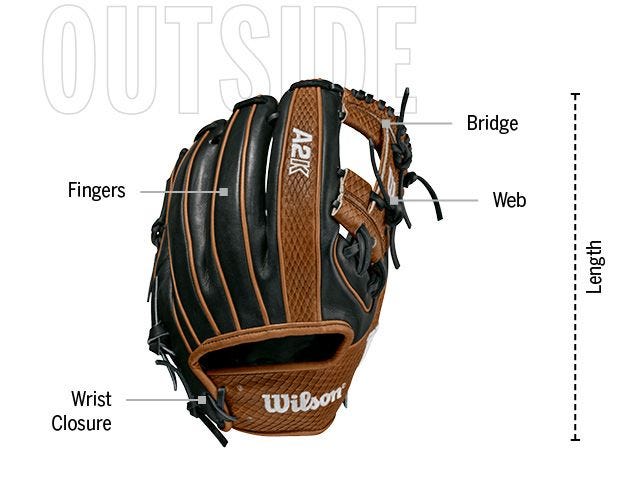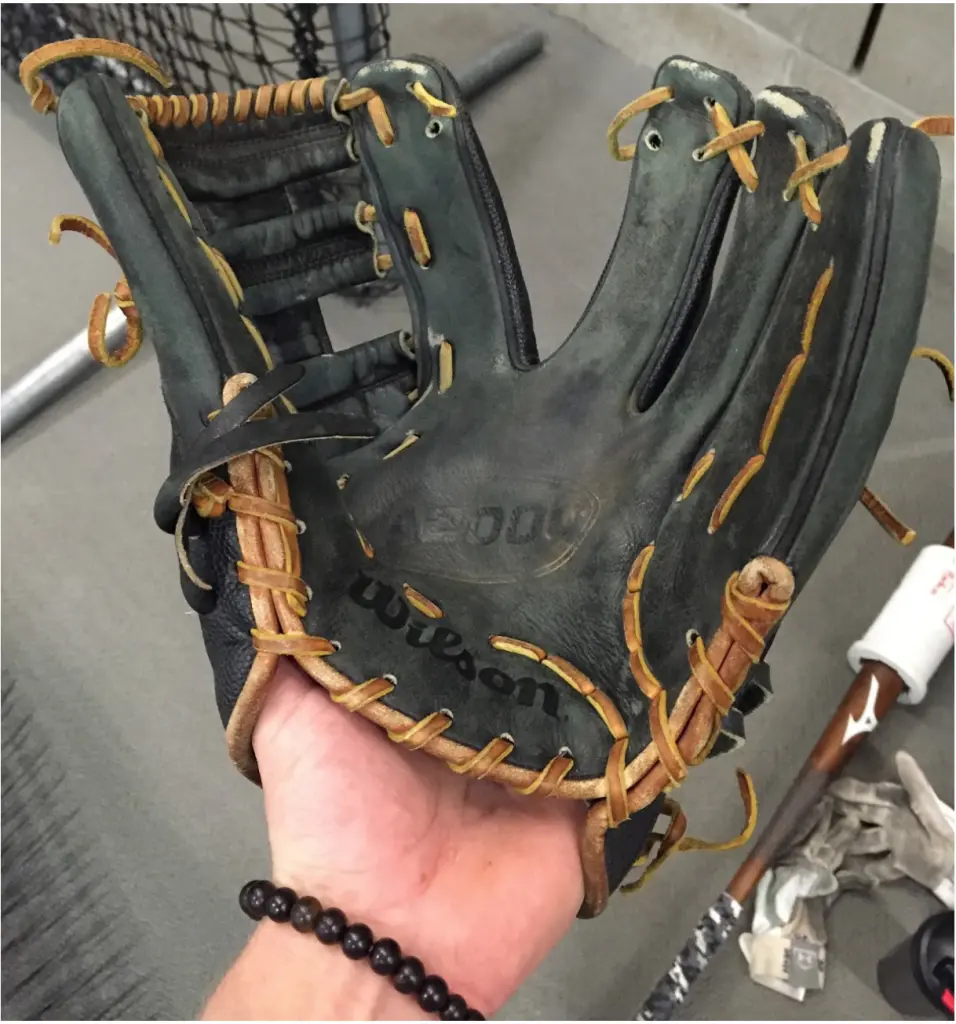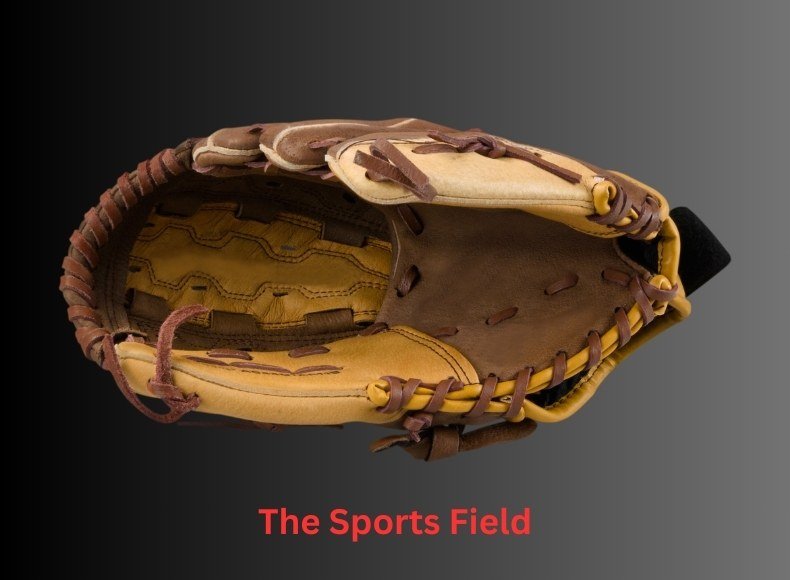A well-maintained baseball glove can last 3 to 5 years. Frequent use and proper care significantly affect its lifespan.
Baseball gloves are essential for players, offering protection and enhancing performance. The longevity of a glove depends on several factors, including the quality of materials, frequency of use, and maintenance routine. High-quality gloves made from premium leather often last longer than cheaper alternatives.
Regular cleaning, conditioning, and proper storage can extend a glove’s life. Players should also be mindful not to overuse a single glove, which can lead to faster wear and tear. Investing time in glove care preserves its functionality and ensures it remains comfortable and reliable on the field.

The Lifespan Of A Baseball Glove
Every baseball player knows the importance of a reliable glove. But, how long should a baseball glove last? The answer depends on various factors. Let’s dive deeper into what influences the durability of your glove.
Factors Influencing Durability
- Material: Leather gloves last longer than synthetic ones.
- Usage: Frequent use wears out gloves faster.
- Maintenance: Proper care extends a glove’s life.
- Position: Catchers’ mitts wear out quicker than outfield gloves.
Average Lifespan Estimates
The lifespan of a baseball glove varies based on the factors mentioned. Here’s a quick guide:
| Type of Glove | Average Lifespan |
|---|---|
| Leather Glove | 5-7 years |
| Synthetic Glove | 2-3 years |
| Catchers’ Mitt | 3-4 years |
Proper maintenance includes cleaning, conditioning, and storing gloves correctly. These practices can significantly increase the lifespan of your baseball glove.

Materials Matter
Choosing the right baseball glove is crucial. The materials used in the glove affect its lifespan. Let’s dive into why materials matter regarding the durability of a baseball glove.
Leather Quality And Types
Leather is the most common material for baseball gloves. The quality of leather can significantly impact the glove’s lifespan. Here are some common leather types used:
- Full-grain leather: This is the highest quality leather. It offers excellent durability and comfort.
- Top-grain leather: Slightly less durable than full-grain. It is still a good choice for many players.
- Premium steerhide: Known for its toughness. It requires more break-in time but lasts longer.
- Leather palm: Often used in lower-end gloves. It provides decent durability but is less comfortable.
Synthetic Gloves: Pros And Cons
Synthetic materials are another option for baseball gloves. They are often used in beginner and youth gloves. Let’s look at the pros and cons:
| Pros | Cons |
|---|---|
| More affordable | Less durable |
| Lightweight | Less comfortable |
| Requires no break-in time | Doesn’t mold to your hand |
Choosing between leather and synthetic depends on your needs. Leather gloves are more durable but cost more. Synthetic gloves are cheaper and lighter but don’t last as long.
The Role Of Maintenance
Maintaining your baseball glove is essential for extending its lifespan. Proper care can keep the glove in good shape for years. Regular maintenance prevents wear and tear and keeps the leather soft. Let’s explore some key maintenance steps.
Cleaning Techniques
Cleaning your glove regularly helps remove dirt and sweat. Follow these steps for effective cleaning:
- Use a soft brush to remove dirt and debris.
- Wipe the glove with a damp cloth to remove sweat and grime.
- Let the glove air dry naturally; avoid direct sunlight.
Avoid using harsh chemicals or soaking the glove in water. These can damage the leather and shorten its lifespan.
Conditioning For Longevity
Conditioning the glove keeps the leather soft and flexible. Here’s how to condition your glove:
- Apply a small amount of glove conditioner to a soft cloth.
- Rub the conditioner into the leather using circular motions.
- Let the glove sit for a few hours to absorb the conditioner.
- Wipe off any excess conditioner with a clean cloth.
Conditioning should be done every few months or when the leather feels dry. This practice helps prevent cracking and extends the glove’s life.
Usage Intensity And Glove Life
A baseball glove’s lifespan depends on how often it is used. Usage intensity plays a crucial role in determining how long your glove will last. If a glove is used frequently, it will wear out faster. Understanding usage patterns helps in estimating the glove’s durability.
Practice Vs. Game Use
Using a glove only during games can extend its lifespan. Game use is usually less intense and less frequent than practice sessions. Practice sessions involve more catches, throws, and overall activity. This leads to quicker wear and tear. To maximize glove life, use a separate glove for practice and games.
Position-specific Wear And Tear
Different positions in baseball affect glove wear differently. Catchers’ mitts wear out faster due to frequent catching of fast pitches. Infielders experience more ground ball catches, causing more wear on the glove’s palm area. Outfielders may have gloves that last longer because of fewer intense catches. Knowing your position can help in choosing a durable glove.
Signs Of Wear: When To Replace
Baseball gloves are crucial for players. Over time, gloves wear out. Knowing when to replace a glove is vital. This section will help you spot the signs.
Visual Indicators
Look closely at your glove. Cracks in the leather are a major sign. Check the stitching. Loose stitches mean the glove is weakening. Observe the laces. Frayed laces can affect performance.
| Visual Indicator | Description |
|---|---|
| Cracks in Leather | Sign of aging and wear |
| Loose Stitches | Stitching coming apart |
| Frayed Laces | Worn-out or broken laces |
Performance Decline
Observe your catching ability. Missing easy catches? Your glove may be to blame. Notice the pocket shape. A misshaped pocket can affect your game. Feel the glove’s padding. Thin padding means less protection.
- Difficulty catching balls
- Misshaped pocket
- Thin padding

Extending Glove Life: Best Practices
Proper care can extend the life of your baseball glove. Using best practices ensures your glove stays in great shape. Let’s explore effective methods to prolong your glove’s lifespan.
Storage Solutions
Correct storage is essential for a long-lasting glove. Keep your glove in a cool, dry place. Avoid storing it in damp areas as moisture can damage the leather.
- Use a glove wrap or ball to maintain shape.
- Store it in a breathable bag, not a plastic one.
- Avoid placing heavy items on top of the glove.
Proper storage prevents the leather from cracking or becoming misshapen.
Off-season Care
Off-season care is crucial for glove longevity. Clean your glove before storing it away. Use a soft brush to remove dirt and debris.
Apply a thin layer of glove conditioner. This keeps the leather supple and prevents drying.
- Clean the glove with a gentle leather cleaner.
- Apply conditioner evenly across the surface.
- Let the glove air dry completely before storing.
Regular off-season maintenance ensures your glove is game-ready when the season starts.

The Cost-benefit Analysis Of Glove Replacement
Baseball gloves are essential for players. They affect performance and safety. Knowing how long a glove should last is crucial. This helps in planning replacements and managing costs. Let’s explore the cost-benefit analysis of replacing baseball gloves.
Investing In Quality
Quality gloves last longer. They provide better performance. Investing in a high-quality glove can save money in the long run. Cheap gloves wear out quickly. This leads to frequent replacements.
High-quality gloves offer better comfort and durability. They are made with superior materials. These gloves also offer better protection. This reduces the risk of injuries.
Calculating Replacement Timing
Knowing when to replace a glove is important. Overused gloves lose their effectiveness. This can affect your game and safety.
Here are some signs that it might be time to replace your glove:
- Cracks in the leather
- Loose stitching
- Loss of shape
- Reduced grip
It’s wise to replace your glove every one to two seasons. This ensures optimal performance and safety.
| Glove Quality | Average Lifespan | Cost |
|---|---|---|
| Low Quality | 1 Season | $30 – $50 |
| Medium Quality | 2 Seasons | $50 – $100 |
| High Quality | 3+ Seasons | $100 – $300 |
Personal Stories: Glove Longevity In Action
Ever wondered how long a baseball glove should last? Let’s dive into real-life experiences. Personal stories offer insights into the lifespan of baseball gloves. Discover how professional players and amateurs keep their gloves game-ready for years.
Professional Players’ Insights
Professional players often have demanding schedules. They need their gloves to endure countless games and practices. Many pros share that a high-quality glove can last 5 to 10 years with proper care.
Manny Machado, a top MLB player, mentioned his glove lasted 8 seasons. He oils it regularly and stores it in a cool, dry place. His glove sees action almost daily.
Mike Trout also shared his experience. His glove, used in over 1,000 games, still performs well. He attributes its longevity to consistent maintenance and quality leather.
Amateur Experiences
Though playing less frequently, amateur players also have stories to tell. Many find their gloves lasting between 3 to 7 years with good care.
Sarah, a high school player, has had her glove for 5 years. She plays three times a week. Her secret is cleaning the glove after every game and conditioning it monthly.
John, a weekend warrior, shared his glove’s journey. His glove has lasted for 6 years. He stores it in a breathable bag and uses leather conditioner twice a year.
| Player Type | Glove Lifespan | Maintenance Tips |
|---|---|---|
| Professional | 5 to 10 years | Regular oiling, proper storage |
| Amateur | 3 to 7 years | Cleaning, conditioning, proper storage |
Both professional and amateur players emphasize maintenance. Keeping a glove clean and conditioned ensures it remains in top shape. Quality materials and proper storage also play crucial roles.
Whether you’re a pro or an amateur, your glove’s lifespan depends on care. Real-life stories highlight the importance of maintenance and quality.
Frequently Asked Questions
How Long Does A Baseball Glove Last?
A baseball glove can last several years. Its lifespan depends on usage and care. Proper maintenance extends its durability.
What Factors Affect the Glove Lifespan?
Glove lifespan is influenced by frequency of use, maintenance, and material quality. Regular cleaning and conditioning help prolong its life.
How Do I Maintain My Baseball Glove?
To maintain your glove, clean it regularly, condition the leather, and store it properly. Avoid excessive moisture.
Can A Glove’s Lifespan Be Extended?
Yes, by regularly cleaning, conditioning, and storing it properly. Avoiding extreme conditions also helps.
Conclusion
A baseball glove’s lifespan depends on usage, care, and quality. Regular maintenance extends its durability. Investing in a high-quality glove ensures longer performance. Always store it properly and clean it regularly. With proper care, your glove can last for many seasons, enhancing your game and saving money in the long run.
